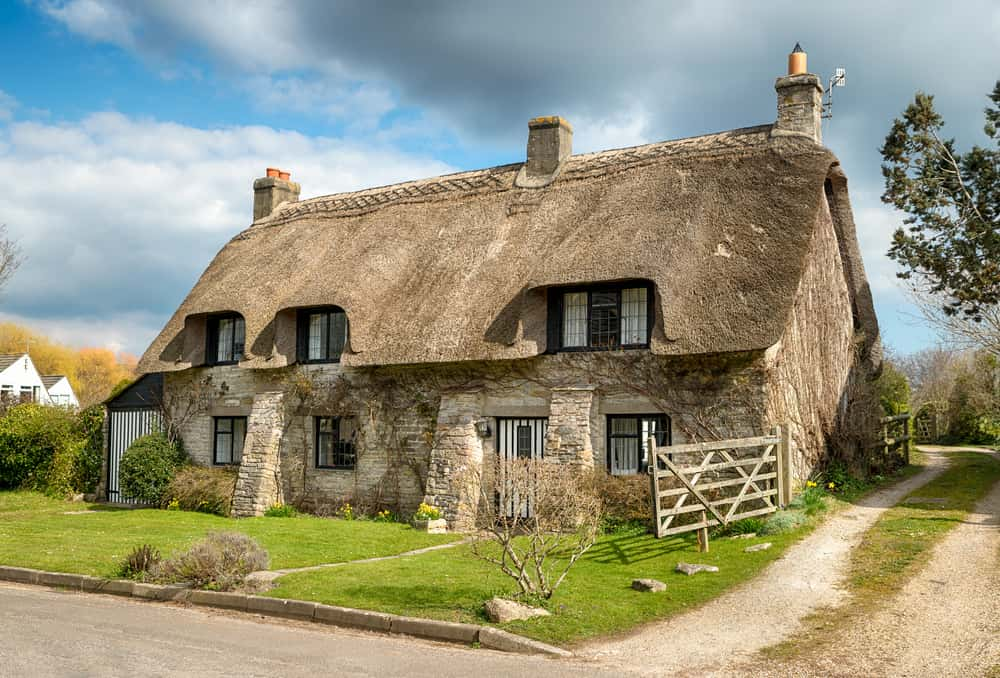The origin of the thatch roof dates back to the Middle Ages, when very few roofing options were available. Thatched roofing material uses a traditional roofing method to create a natural roof covering with elegance and charm of its own.
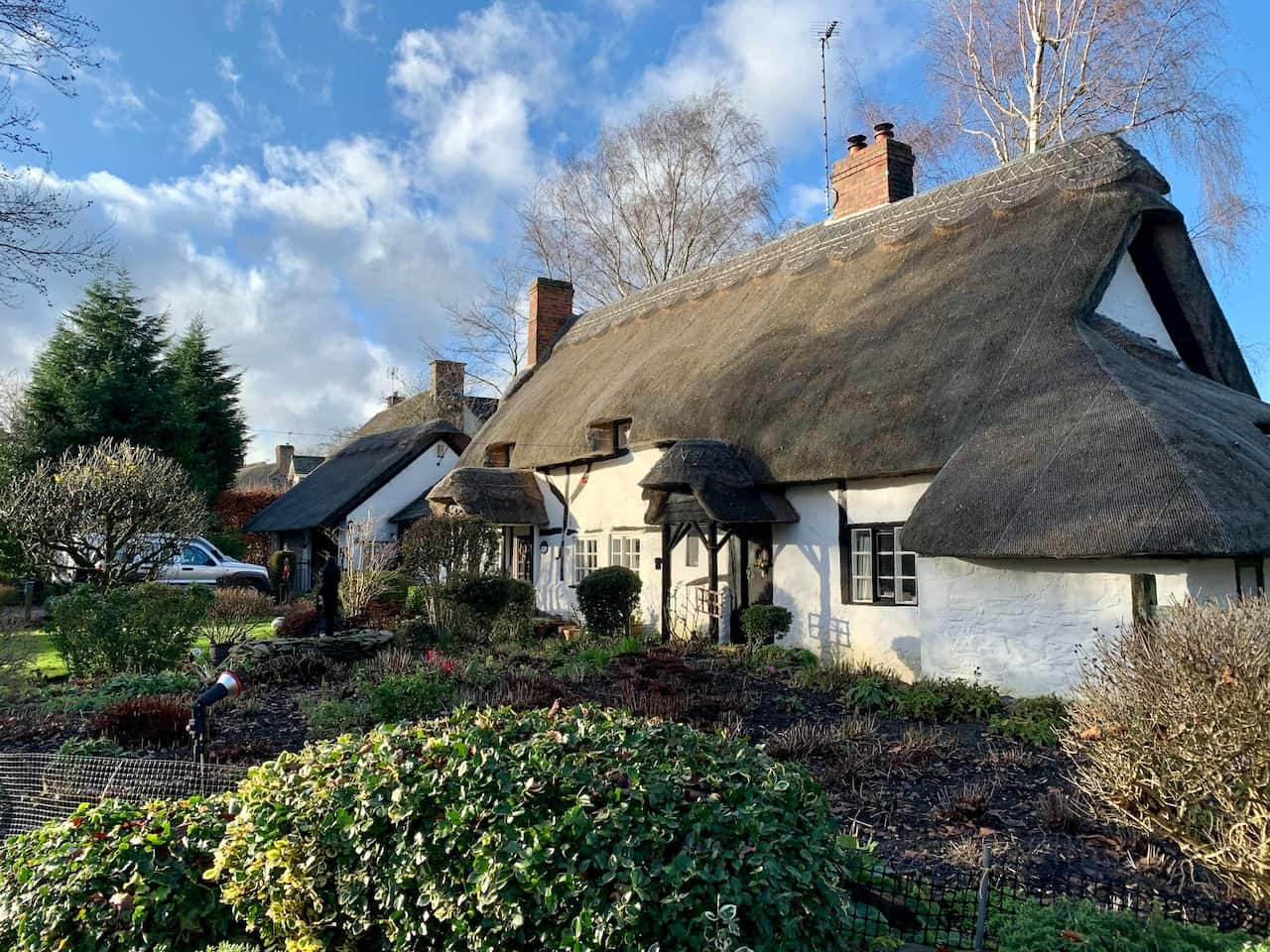
Today, this form of design is witnessed in both domestic and commercial setups. You can choose from diverse styles coupled with different thatched roof materials. In addition to heightening the aesthetics, thatched roofing is a holistically sustainable option.
Let’s delve deeper into the various materials used to build thatch roofs and their benefits:
Materials Used for Thatched Roofing
Ideally, thatch roofing material uses dry vegetation such as water reed, straw, sedge, cladium mariscus, heather, rushes, or even palm branches.
These thatched roof materials are layered so that they shed water from the inner roof. However, today, you can also use synthetic thatch, a perfect alternative to natural thatch. Compared to natural thatch, synthetic thatched roof material requires less maintenance, is sustainable, and is decay free. There are other materials which you can use to build thatched roofs on your homes, as seen below:
1. Get Inspired by the Natural Feel of Synthetic Thatched Roofing Material
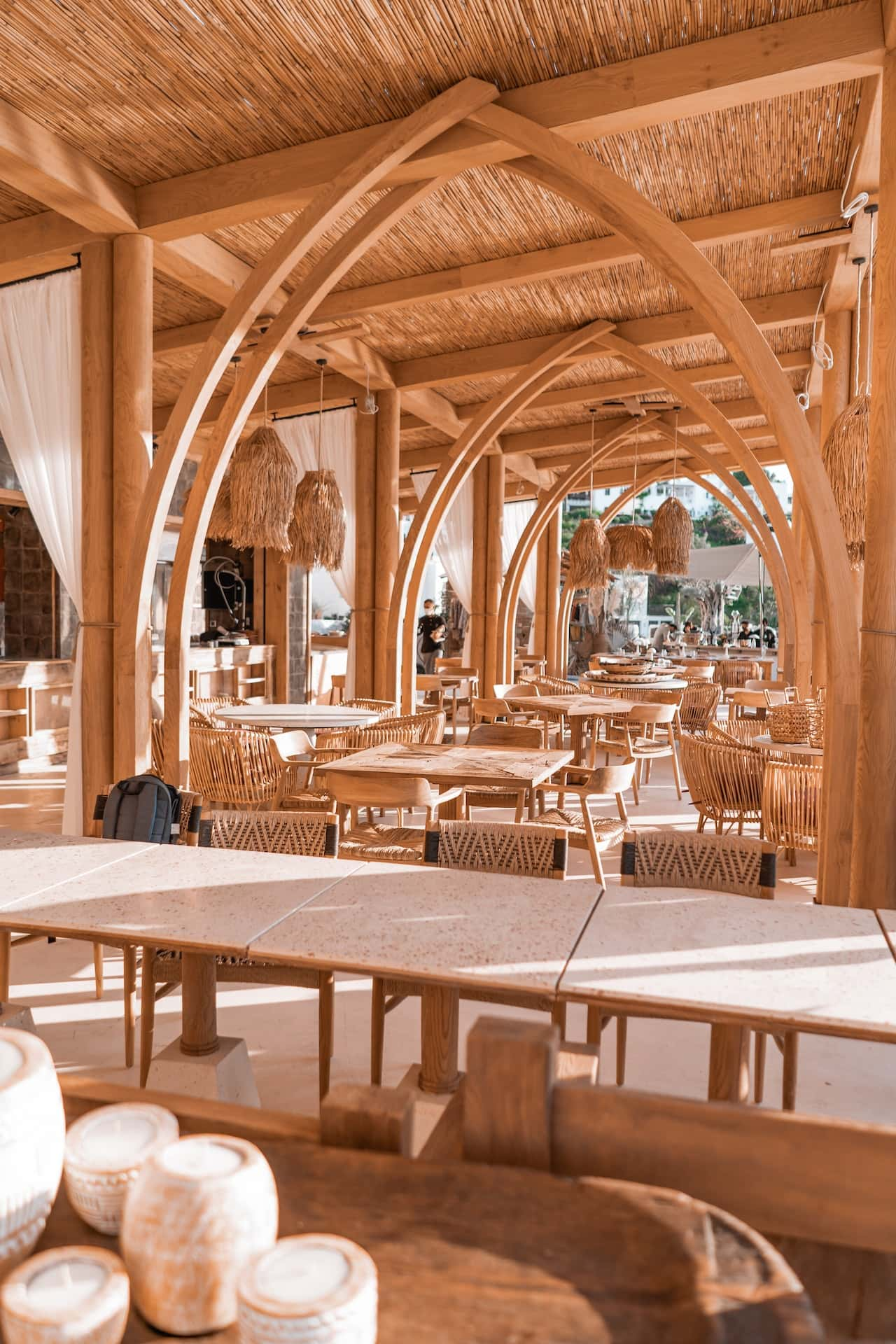
Synthetic thatch is a perfect twin for natural thatch and one of the best choices for outdoor facilities like restaurants. Artificial thatched roof maintenance has become a preferred choice among builders and architects for amusement parks, beach-view resorts, among modern homes, as it offers greater longevity and lower maintenance.
Although synthetic thatched roofing material is made from high-grade polyethylene, its appearance is so natural that unless you touch it, you won’t realize its genuineness.
Furthermore, synthetic thatched roof material is made of fresh, sustainable, fire- and moisture-resistant material. Additionally, it also provides a pleasant cooling shade and is UV resistant.
2. Appreciate the Authentic Beauty of a Natural Thatch
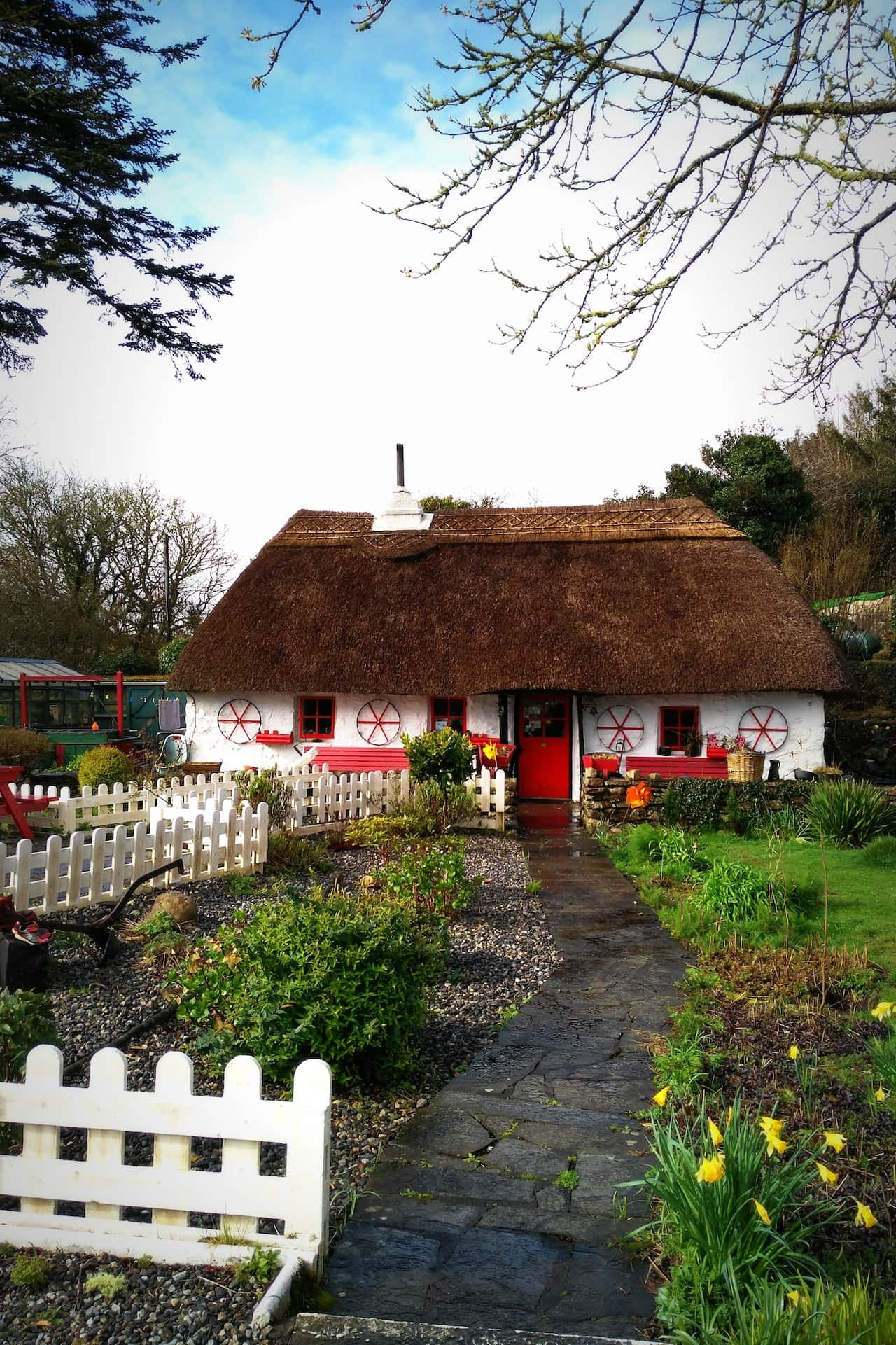
Natural thatched roofing uses organic thatched roof material. It is a perfect choice for indoor installations or temporary facilities and is famous for that design, given its authentic appearance and cost efficiency.
A natural thatch roof can last 2-5 years, depending on environmental factors.
Raw thatch roof material should be your go-to option if you appreciate informal and tropical aesthetics.
Below are some of the popular choices in natural thatch roofing material covering—
3. Recreate an Exotic Appearance with Reed as Thatch Roof Material
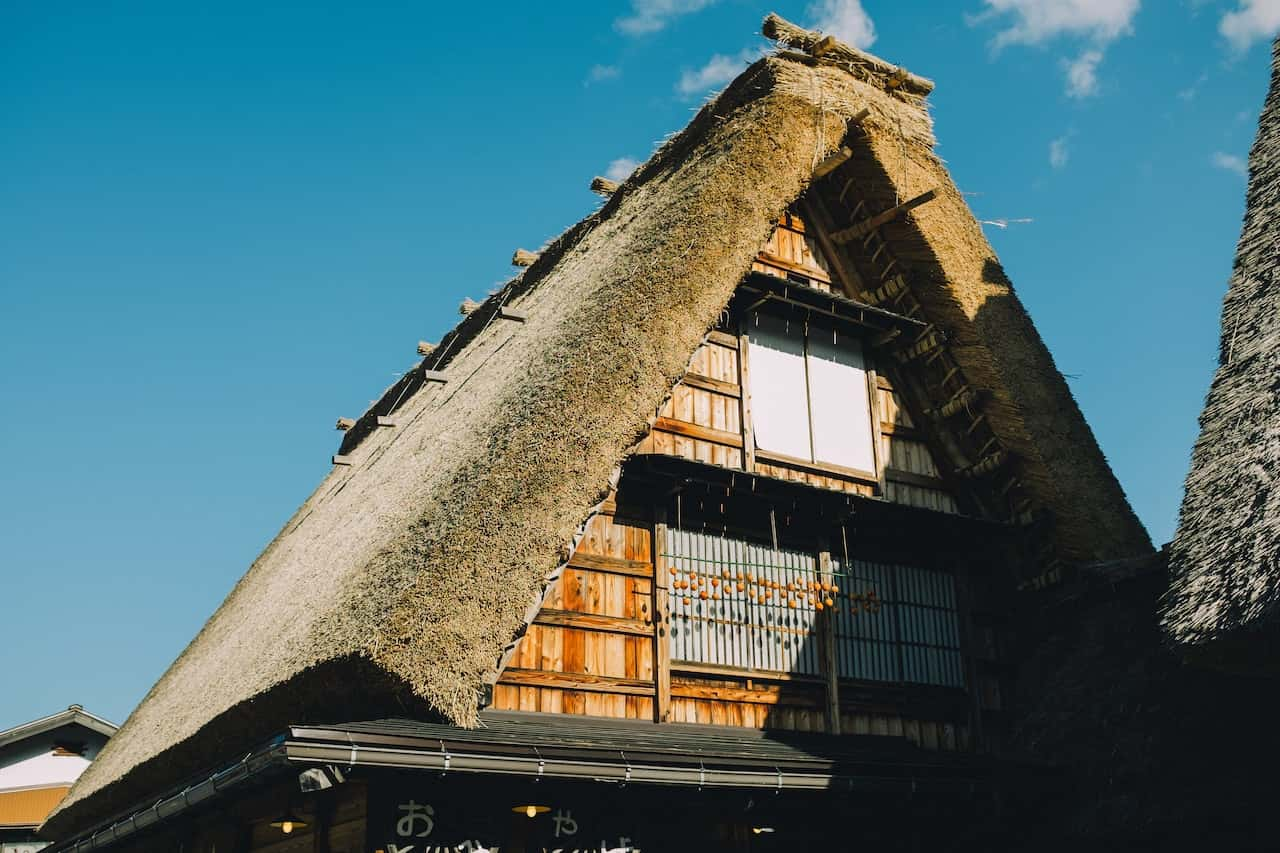
Reed is a popular choice for thatched roof material. The reed has been preferred for its attractiveness and durability for hundreds of years. Reed is used as a thatch roof material to recreate the exotic aesthetic appearance of tropical Asian grass.
Reed is a durable and easy-to-lay option for thatched roofing. Water reed is popularly used as a waterproof thatched roofing solution.
4. Choose the Longest Lasting Thatch Roof Material of Water Reed
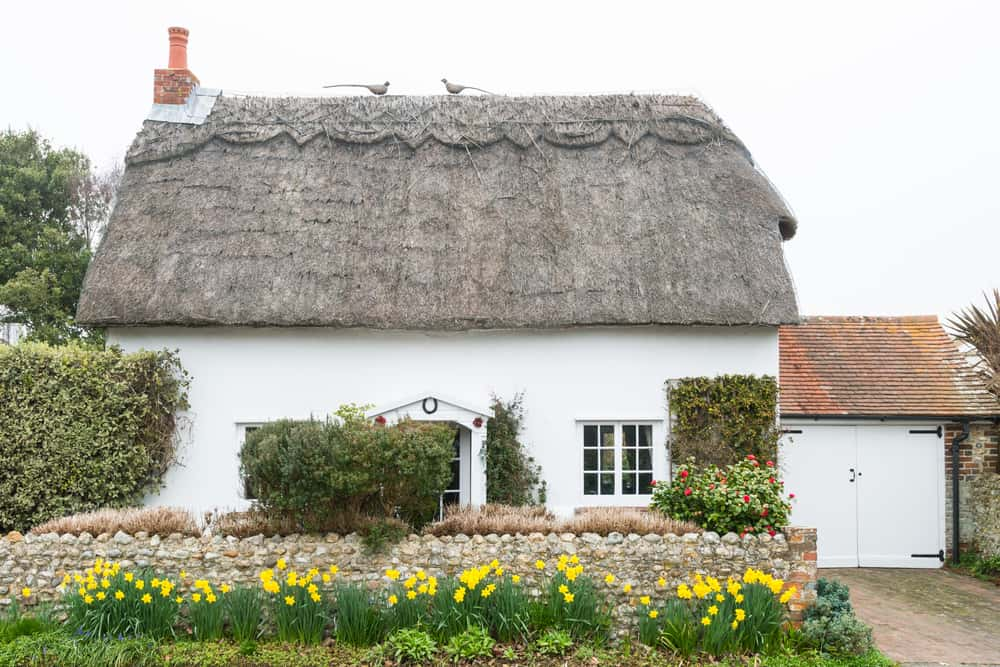
Water Reed is extensively used as a thatch roofing material. It is one of the most durable materials and provides maximum longevity. Each layer of water reed is fixed into the rafters and held in place with either hazel swats or steel sways.
For centuries, water reed has been used as a natural roof covering. It has the highest silicon concentration among all domestic vegetable plants, making it water-resistant. It also has natural insulation properties.
Furthermore, the high percentage of silicon also keeps away insects and animals, making water reed one of the longest-lasting thatch roof materials, some lasting for even 50 years.
5. Create Beautiful Aesthetics with Combed Wheat Reed for Thatch Roofing Material
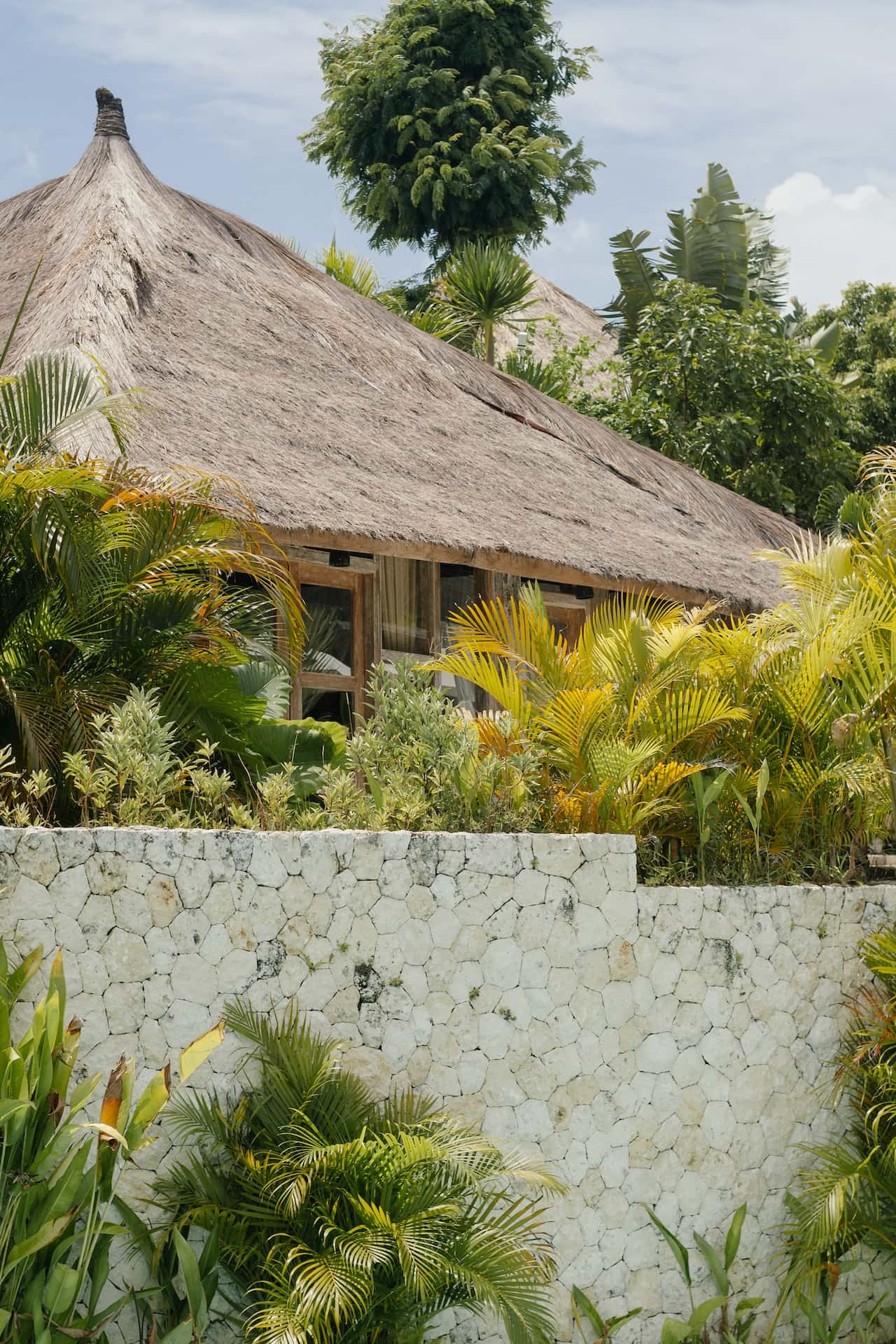
Combed wheat reed is similar to water reed in appearance. The grain of the combed wheat reed is removed with the help of a combing machine, hence the name of this thatch roof material. Combed wheat reed is applied to the roof, similar to the water reed.
Combed wheat reed as a thatch roofing material is also known for its durability. However, the performance of a thatch roof material largely depends on the roof design, its shape, position and pitch. Other factors that affect the longevity of the thatch roof include geographical and topographical factors, along with the thatcher’s skill. With regular thatched roof maintenance, the natural roof covering of a combed wheat reed can last from 25 to 35 years.
6. Embrace the Tropical Appearance with Long Straw Thatching Material
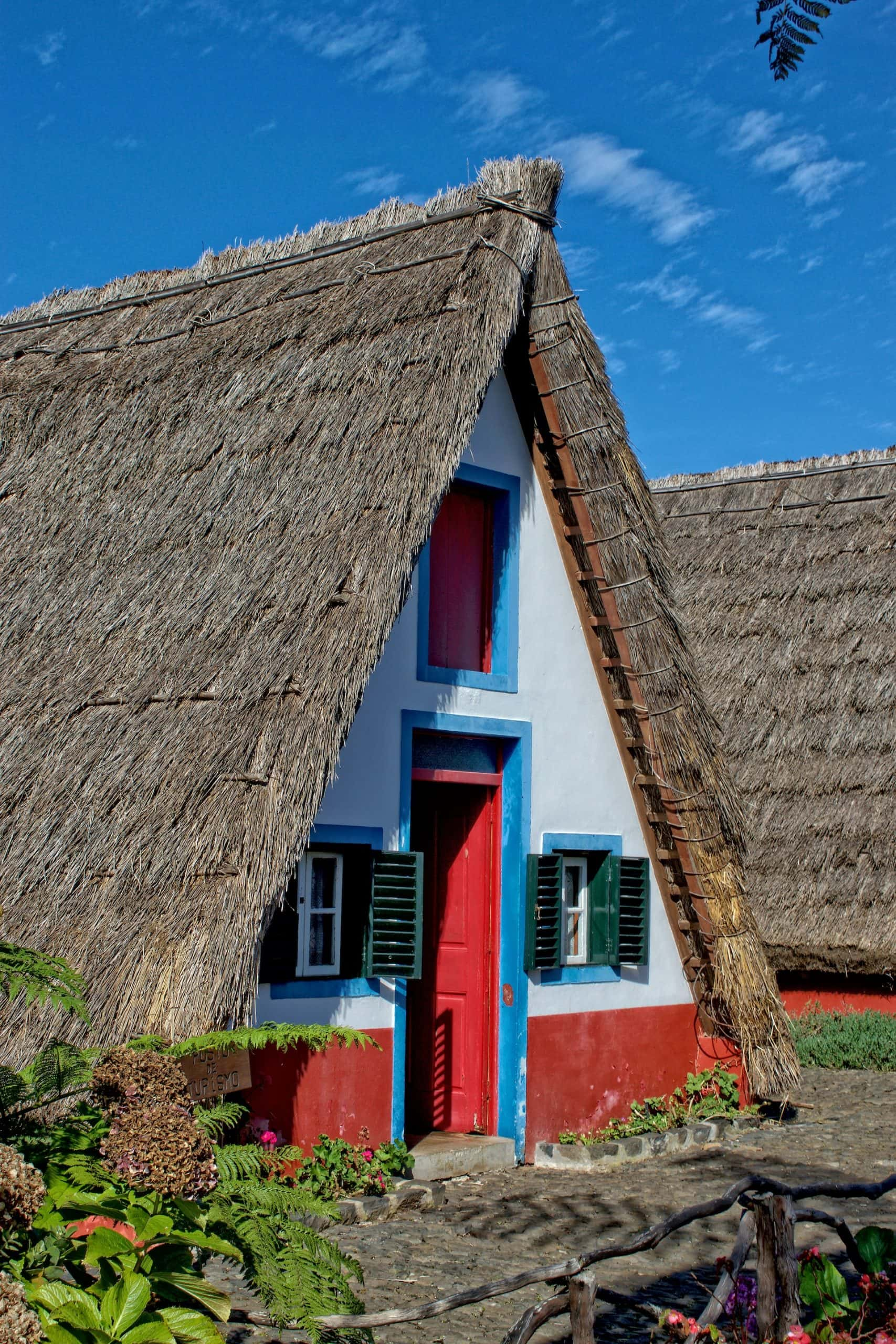
Long Straw is a commonly used thatched roofing material.
A variety of straws are specifically grown for use on thatched roofing. Before straw is used in thatched interior design, it must be made into yelms— a tight, compact layer of straw. Yelming is a lengthy procedure that straightens the long straw and levels it at both ends.
Removing old material from the roof is unnecessary for thatched roof maintenance of long straws. Commonly, the thatcher will only remove the existing material to a base coat and fix the new straw to this base with hazel spars.
Since the long lengths of the straw are visible on the surface, compared to reed, thatch roof material using straw creates a rustic and rugged appearance. Reed, on the other hand, usually creates a closely cropped look.
As birds commonly attack this thatched roof material, netting is also fitted to the entire roof. You may need to consult a professional thatcher who can help you to select the suitable straw for a thatched interior design that is neither too dry nor too wet.
7. Give Your Roof a Distinctive Appearance with Heather Thatched Roofing Material
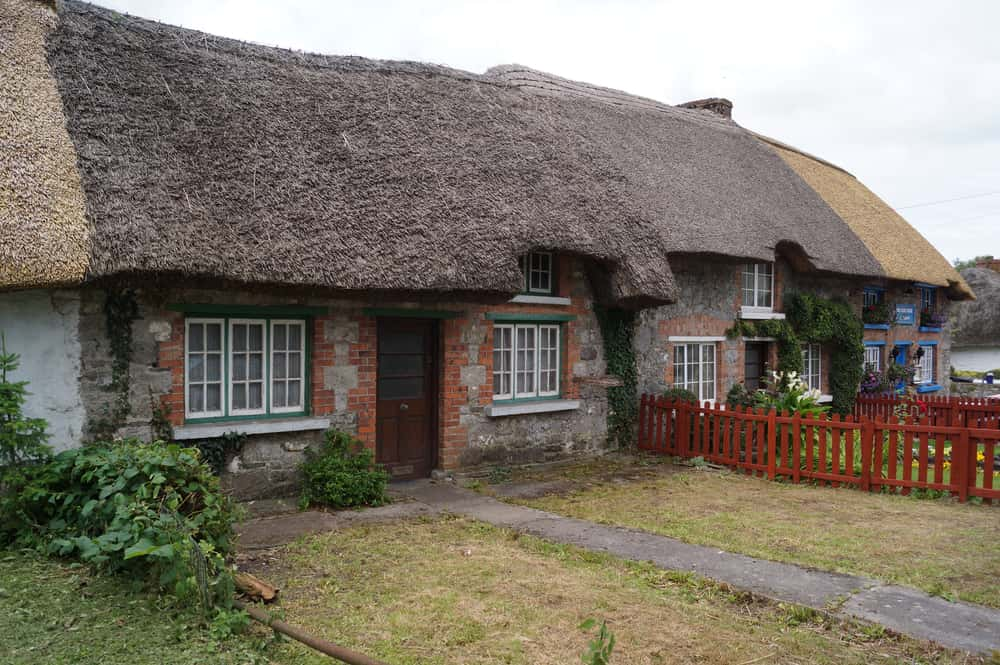
Using heather as a thatch roofing material gives the roof a distinctive colour and an aesthetic appearance. The heather used as thatch roof material needs to be a minimum of 3-4 feet in length.
As rains may penetrate through the wavy heather material, layers of turf are usually placed beneath this thatching material. Heather is a complex material to use, and finding the right length is also not easy as landowners burn it to keep the growth under control.
Moreover, it needs to be replaced after every 20 years. Laying the thatching material of heather requires particular expertise to create a watertight roof.
8. Use the Versatile Thatched Roof Material of Turf
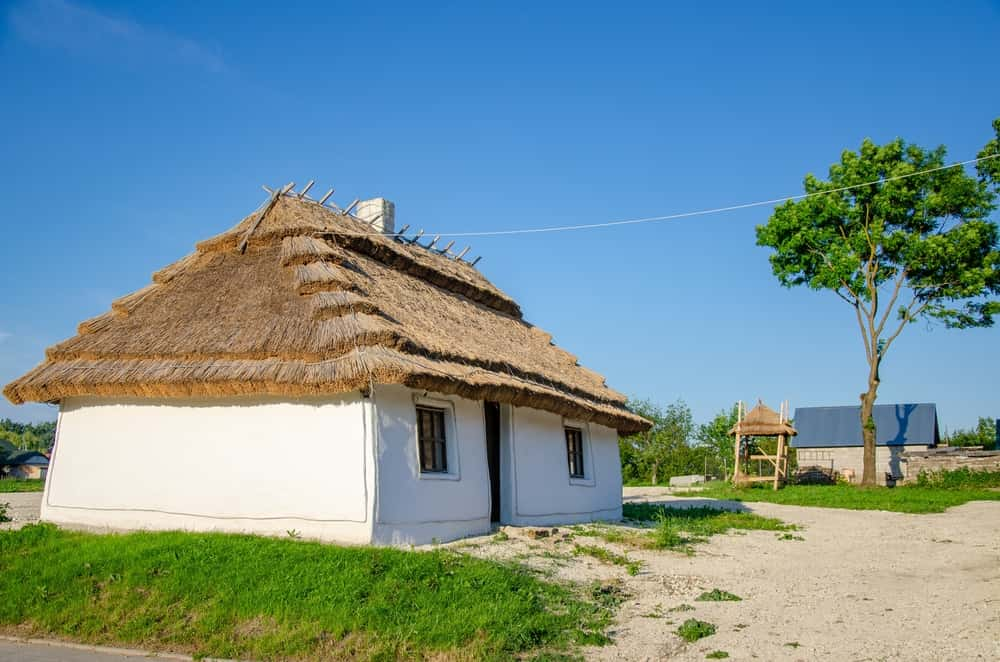
Turf is another choice for thatching material. To create waterproof thatched roofing using turf, strips of grass are placed similarly to tiled roofs.
Given the time and effort required to cut the strips of turf and its relatively untidy appearance compared to straw or reed, the use of turf as thatch roof material is diminishing over time.
Benefits of Thatched Roofing
Worldwide, thatched roofing is used as an eco-friendly material for roofs. In addition, to being a cost-effective solution to engineered building materials that require a hefty budget and a lot of energy to cool the interiors mechanically, thatch roof material has natural cooling elements. In today’s interior design, thatched roofing offers an aesthetic blend of tradition and modernity, among other benefits—
1. Adds to the Aesthetics
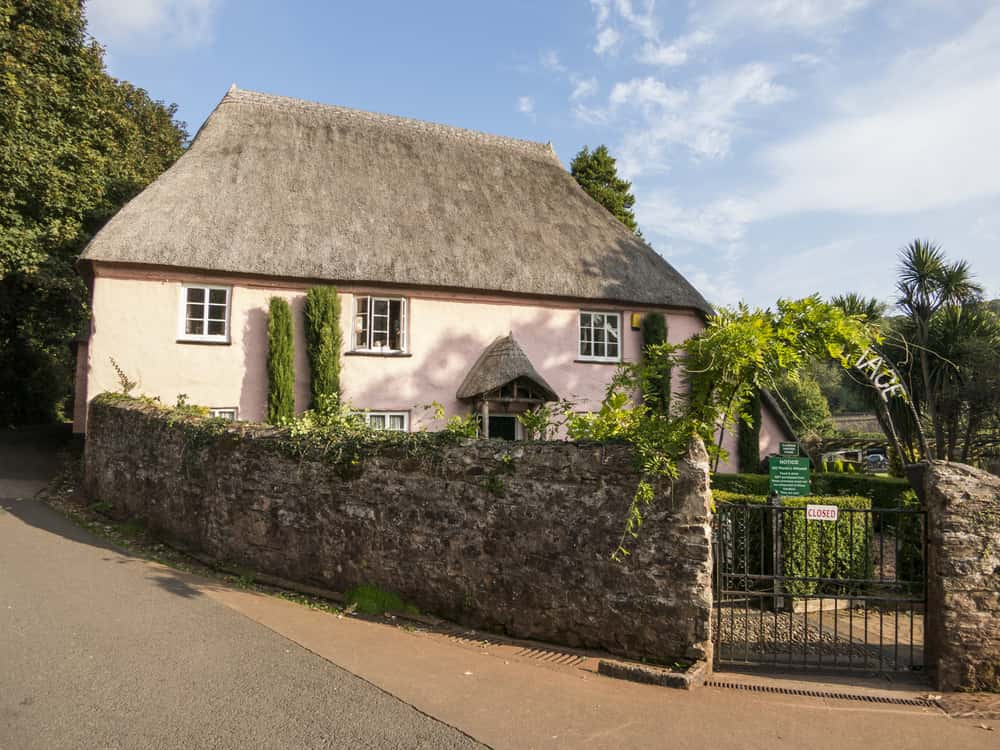
Thatch Roofing has a traditional charm and is a skilled art form that is highly aesthetic, attractive and charming. Today, thatched interior design can be innovatively combined with modern materials to match the aesthetic standards of contemporary designs.
2. Has Higher Insulating Value
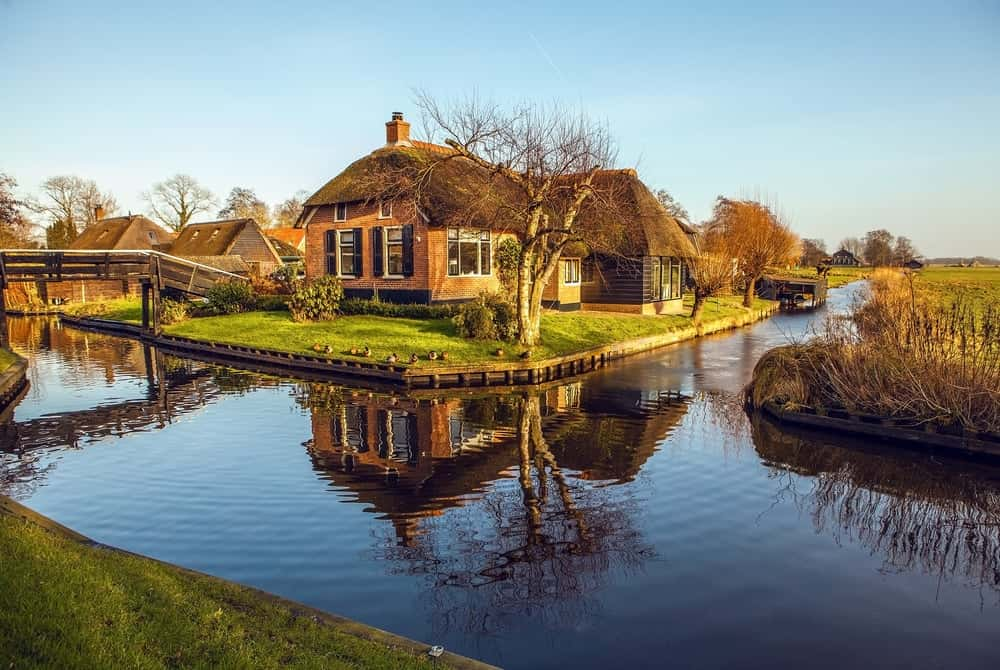
Thatch roofing material is a natural insulating material. It is one of the few naturally insulating materials known for its insulating value. Thatching material is three times more insulating than a typical RCC roof.
Using thatched roof material for your house also reduces the need for mechanical conditioning.
3. Water Resistant
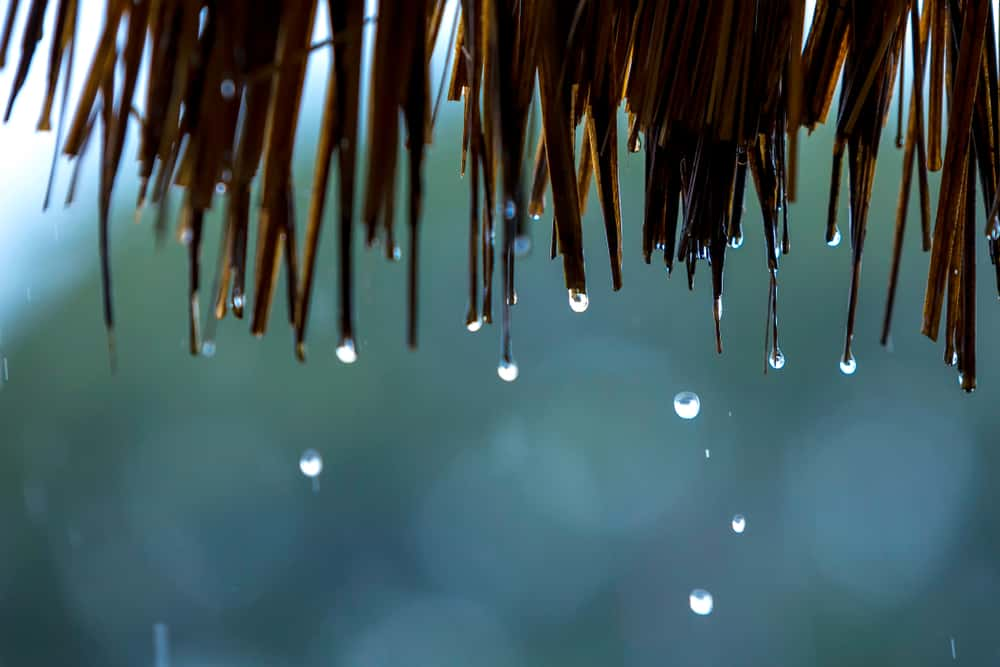
The outer layer of water reed thatch roof material has a natural wax coating that is moisture resistant. Using water reed thatching material provides natural resistance to liquid and salt. Furthermore, when installed at a slope of over 45 degrees, it becomes an ideal solution for a waterproof roof. You can even consider building one in coastal areas prone to heavy rains.
4. No Longer a Fire Prone Material
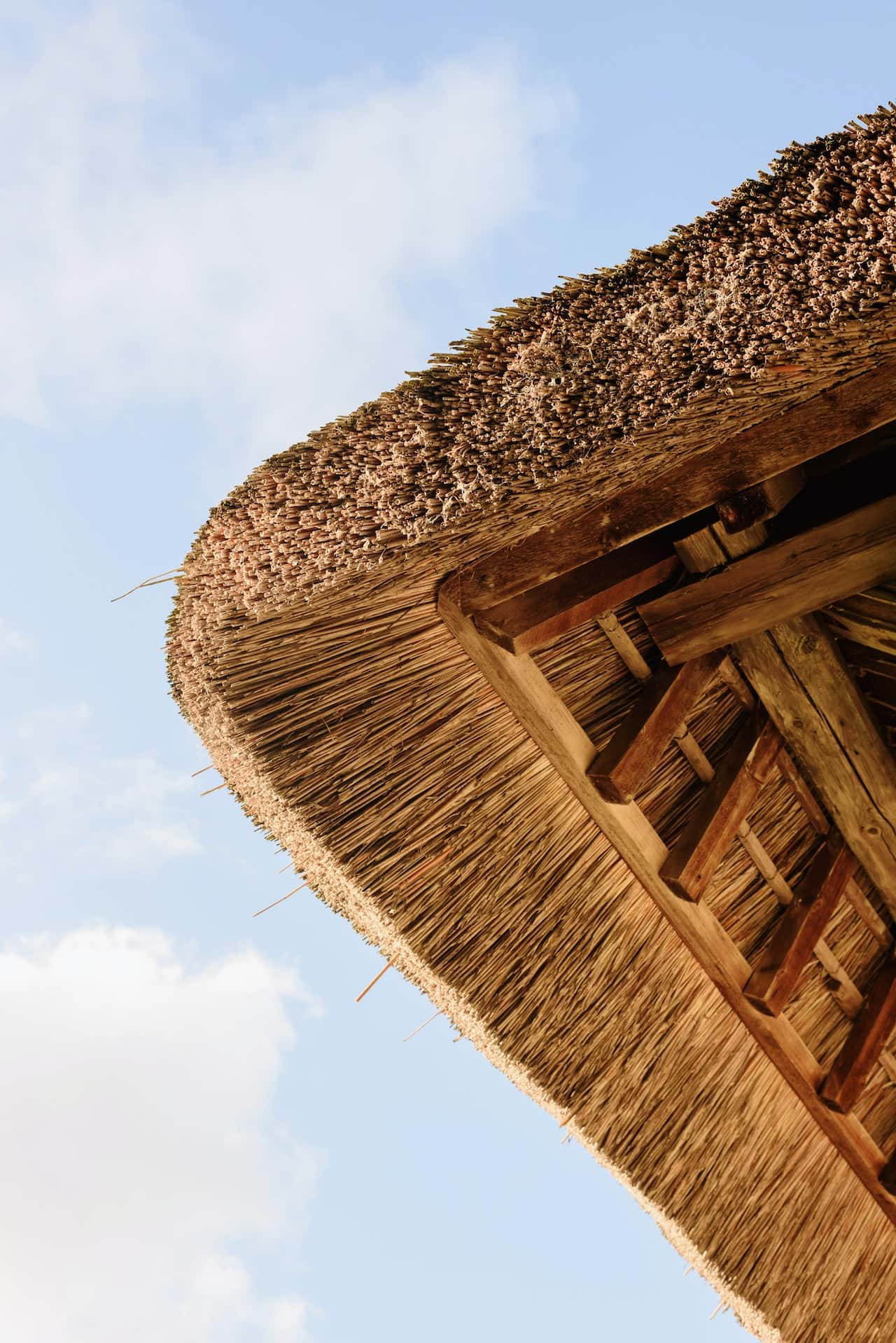
These materials are no longer more prone to fire than any other material. The thatched roofing is installed in a minimum thickness of about 9-12”. This density allows the thatching material to smoulder, i.e. it slows down the spread of smoke. Today, several other techniques are also used in thatched interior design to prevent fire in thatch.
Thatched Roof Maintenance
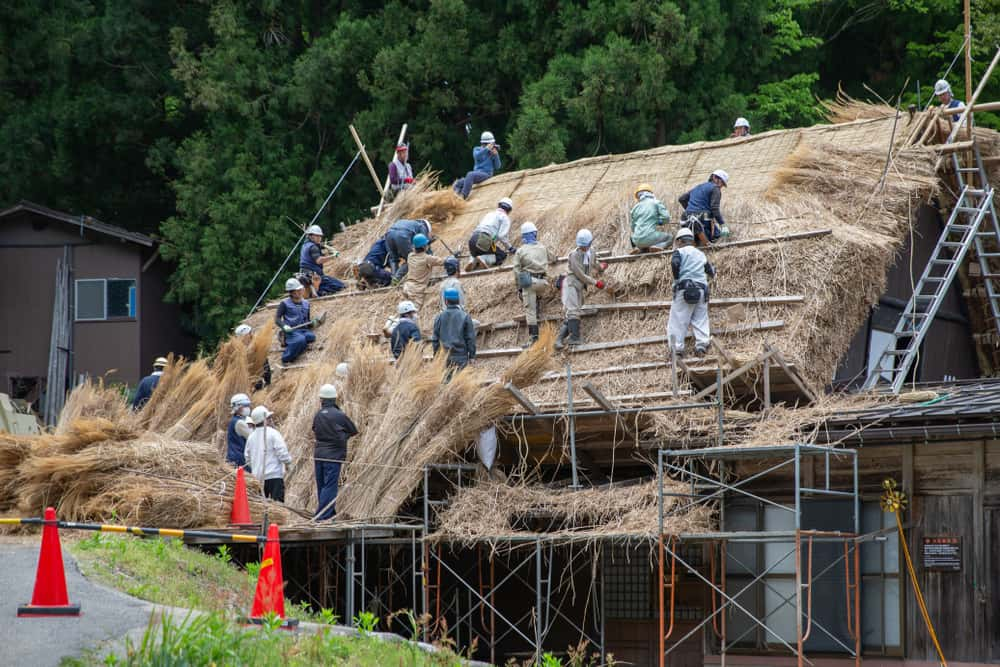
A thatch sealer’s transparent, water-based acrylic coating protects a thatched roof’s longevity and natural appearance.
The sealer reduces the risk of damage to the thatched roofing material and protects it from discolouration, rotting, bird degradation, or other weather elements.
The sealing membrane is, therefore, a perfect all-in-one solution with its principal characteristics of fire retardant properties, ultraviolet resistance, and stain resistance.
The sealant coating also preserves the earthy look and the natural feel of the thatch without compromising on its original quality. The thatch roof does not turn yellowish over time with its excellent adhesion properties.
The sealant locks out moisture and extends the lifespan of the thatched roof material, thus making it more resistant to humidity and other weather elements.
Furthermore, a thatch sealer prevents fungal and bacterial growth, hay fever, and sinusitis. It also enhances dust suppression. Regular coating of thatch sealant reduces the need to frequently brush and re-thatch the roof, thus making the thatched roof maintenance easier and affordable.
Concluding Remarks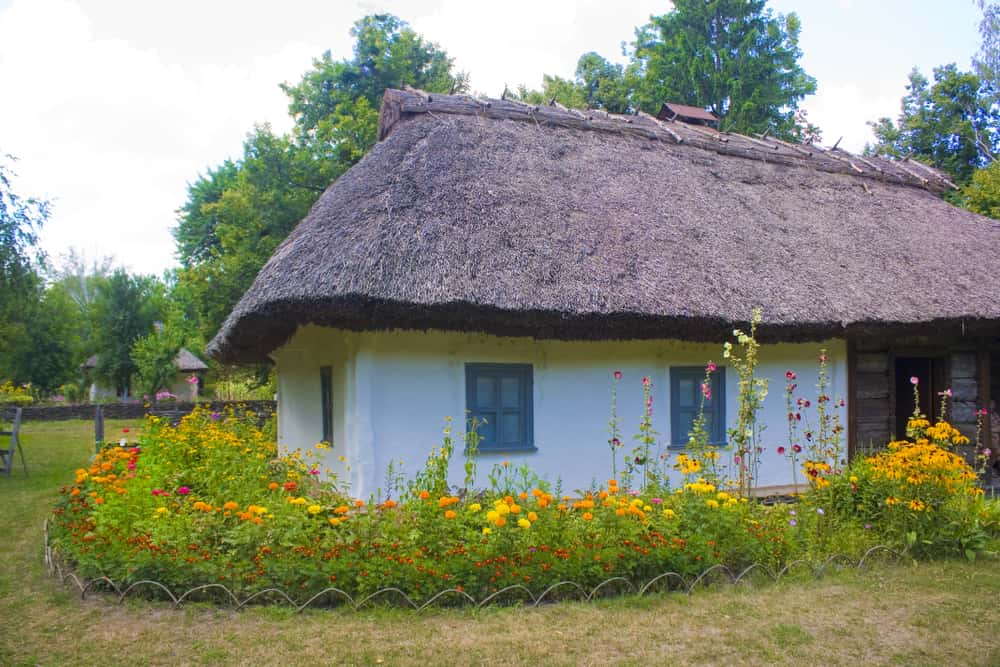
Given the impending effects of climate change and environmental degradation, a revival of alternate building materials has become inevitable. In this regard, the use of thatched roofing material is a holistically sustainable option to consider.
HomeLane can help you select the best-thatched roof material that complements your interior, in addition to helping with an easy, hassle-free installation.
FAQs
1. What Material Is Used in Thatched Roofs?
Predominant thatched roof materials include organic ingredients like straw, reed, combed wheat, water, grass, etc. Nowadays, you can also opt for synthetic thatched roofing—one of the best solutions for natural thatch roofs. It is recyclable, durable, and withstands environmental factors like rain, moisture and UV rays.
2. How Long Does Thatch Last on a Roof?
With regular thatched roof maintenance, thatching material can last anything between 15 and 40 years. You may need to replace the ridge of the thatch roofing between 10 and 15 years.
3. Is Thatched Roof Waterproof?
Thatch roof material such as water reed is naturally waterproof as the inside of water reed is usually hollow. Water cannot penetrate the thatched roofing with 228mm and 381mm thicknesses. Moreover, moisture is not usually absorbed into thatched roofing deeper than 1 or 2 inches, and commonly thatched roofs are at least 12 inches deep.
4. How Thick Should the Thatched Roof Be?
For maximum longevity of the thatch roofing, an optimum thickness of 228mm and 381mm is advised for water reed thatched roof materials and a density of 228mm and 300mm for combed wheat reed and long straw thatched roof materials. The thickness of the roof depends on the pitch and length of the thatch roof material.
5. Do Thatched Roofs Smell?
Thatch roof material does smell as it’s made from organic material like straw, grass, etc. It is not unpleasant, but thatch roofing gives off a distinct aroma.
As everyone has different tastes, some people not accustomed to dry vegetation may not like the smell of a thatched roof.
If the thatched roofing material begins to smell musty, you may need to call a qualified thatcher who can diagnose the problem and suggest proper thatched roof maintenance.

